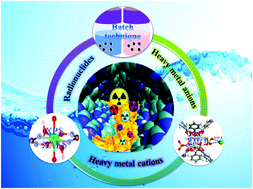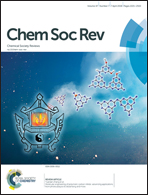Metal–organic framework-based materials: superior adsorbents for the capture of toxic and radioactive metal ions
Abstract
Highly efficient removal of metal ion pollutants, such as toxic and nuclear waste-related metal ions, remains a serious task from the biological and environmental standpoint because of their harmful effects on human health and the environment. Recently, highly porous metal–organic frameworks (MOFs), with excellent chemical stability and abundant functional groups, have represented a new addition to the area of capturing various types of hazardous metal ion pollutants. This review focuses on recent progress in reported MOFs and MOF-based composites as superior adsorbents for the efficient removal of toxic and nuclear waste-related metal ions. Aspects related to the interaction mechanisms between metal ions and MOF-based materials are systematically summarized, including macroscopic batch experiments, microscopic spectroscopy analysis, and theoretical calculations. The adsorption properties of various MOF-based materials are assessed and compared with those of other widely used adsorbents. Finally, we propose our personal insights into future research opportunities and challenges in the hope of stimulating more researchers to engage in this new field of MOF-based materials for environmental pollution management.



 Please wait while we load your content...
Please wait while we load your content...